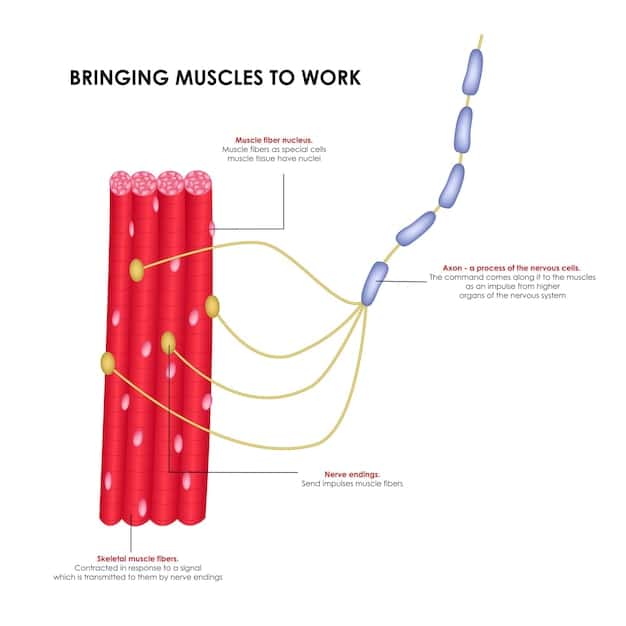Maximize Muscle Growth: Updated 5×5 Program for 2025

The updated 5×5 training program for 2025 provides a structured, progressive approach to maximize muscle growth and strength by focusing on compound lifts, optimized recovery protocols, and strategic nutritional support, ensuring consistent adaptation and superior gains for dedicated lifters seeking robust results.
In the relentless pursuit of strength and hypertrophy, athletes and fitness enthusiasts constantly seek the most effective methodologies. One program that has stood the test of time, proving its efficacy for decades, is the 5×5 training regimen. For 2025, we delve into an updated version designed to help you Maximize Muscle Growth: The Updated 5×5 Training Program for 2025, pushing past plateaus and forging a more powerful physique.
The Enduring Legacy of 5×5 Training
The 5×5 training philosophy, at its core, is remarkably simple: perform five sets of five repetitions for a select number of compound exercises. This straightforward approach has been championed by legendary strength coaches and bodybuilders for its raw effectiveness in building both strength and muscle mass. Its longevity is a testament to its fundamental principles, which align perfectly with the physiological demands of muscle growth. By focusing on heavy, compound movements, it recruits a large number of muscle fibers, stimulating a robust anabolic response.
What makes 5×5 so potent is its emphasis on progressive overload. The goal is to consistently increase the weight lifted over time, forcing your body to adapt and grow stronger. This principle is non-negotiable for muscle hypertrophy and strength gains. The 5×5 structure provides a clear, measurable path for this progression, making it easy to track your improvements and remain motivated. Furthermore, the limited number of exercises per session allows for intense focus and maximum effort on each lift, optimizing the quality of your training.
Historical Context and Evolution
The 5×5 method gained significant traction through figures like Bill Starr, whose “5×5 Program” focused on three full-body workouts per week, primarily using squats, bench presses, and cleans. Later, Reg Park, a five-time Mr. Universe, also popularized a 5×5 routine that included exercises like squats, bench presses, and deadlifts. These pioneers understood the power of multi-joint movements performed with heavy loads for overall development. Over the years, countless variations have emerged, each tailored to specific goals or preferences, but the core principle of 5×5 remains the bedrock of these adaptations.
The evolution of 5×5 programs has seen adaptations for different levels of lifters, from beginners to advanced. Some programs maintain the full-body structure, while others adopt a split approach. The choice of exercises has also diversified, incorporating more modern variations of traditional lifts. Regardless of the specific interpretation, the efficacy hinges on adherence to the core tenets: compound movements, high intensity, and consistent progression. The updated 5×5 for 2025 integrates contemporary research on recovery, nutrition, and periodization to enhance these foundational components.
The simplicity of the 5×5 program is often its greatest strength, making it accessible while delivering profound results. It cuts through the noise of overly complex routines, focusing on what truly matters for building a strong, muscular physique. By understanding its historical roots, we can better appreciate its timeless value and how the 2025 update refines its potential.
Key Principles of the 2025 5×5 Program Update
The 2025 update to the 5×5 program is not a radical overhaul but rather a refinement that integrates current scientific understanding of muscle physiology, recovery, and periodization. The core principle remains progressive overload, but with a more nuanced approach to volume, intensity, and strategic deloads. This ensures sustained progress while mitigating the risk of overtraining or plateaus.
Optimized Exercise Selection
While traditional 5×5 programs often stick to a very limited set of exercises, the 2025 update suggests a slightly broader, yet still curated, selection of compound movements. This allows for more comprehensive muscle activation and addresses potential muscle imbalances without diluting the intensity. The focus remains on exercises that allow for maximum weight progression and engage the largest muscle groups. For instance, while barbells are primary, strategic inclusion of dumbbell variations or machine equivalents can provide unique stimuli.
- Barbell Squats: The king of exercises for lower body and core strength.
- Barbell Bench Press: Fundamental for chest, shoulders, and triceps.
- Barbell Rows/Pull-ups: Crucial for back thickness and upper body pulling strength.
- Overhead Press: Develops shoulder strength and stability.
- Deadlifts: An unparalleled full-body strength and muscle builder (often 1 set of 5 or 3 and less frequent).
The selection prioritizes movements that allow for consistent, heavy loading. Accessory exercises, while not the core of the 5×5, can be sparsely added at the end of a session to address specific weaknesses or add extra volume for stubborn muscle groups, but they should not detract from the main lifts.
Strategic Deloads and Recovery
One of the most significant updates for 2025 is the formal integration of strategic deload weeks. Traditional 5×5 routines, especially for intermediate and advanced lifters, can be taxing. Consistent heavy lifting without planned breaks can lead to accumulated fatigue, diminished performance, and increased injury risk. Deloads allow the central nervous system and muscular system to recover fully, enabling better performance in subsequent cycles.
A typical deload might involve reducing the weight by 40-50% for the same number of sets and reps, or maintaining the weight but significantly reducing the number of sets or reps. The frequency depends on individual recovery capacity and training intensity, but a common approach is a deload every 4-6 weeks of intense training. This proactive recovery strategy is vital for long-term progress.
Beyond deloads, the update emphasizes comprehensive recovery protocols. This includes prioritizing 7-9 hours of quality sleep per night, active recovery techniques like light cardiovascular exercise or stretching, and stress management. Recovery is not just the absence of training; it’s an active process crucial for muscle repair and growth.
Training Schedule and Progression Model
The revamped 5×5 program for 2025 typically follows a 3-day full-body or upper/lower split, allowing adequate recovery between sessions. The choice depends on individual recovery capacity and preference, but a full-body approach on Monday, Wednesday, and Friday often yields excellent results due to the high frequency of hitting major muscle groups.
Sample Full-Body Workout Schedule
A classic full-body approach involves three workouts per week, hitting each major muscle group three times. This high frequency, coupled with sufficient recovery days, has proven incredibly effective for muscle growth and strength gains. Each workout focuses on a few compound exercises, performed for 5 sets of 5 repetitions after appropriate warm-up sets.
- Workout A: Barbell Squats, Barbell Bench Press, Barbell Rows.
- Workout B: Barbell Squats, Overhead Press, Deadlifts (1×5 or 1×3 heavy set after warm-ups).
- Workout C: Barbell Squats, Barbell Bench Press, Barbell Rows.
This structure ensures that squats are performed in every session, recognizing their unparalleled ability to stimulate a systemic growth response. The bench press and rows are alternated, ensuring balanced upper body development. Deadlifts are typically performed once a week due to their intense physiological demand, often after the main squats for that day.

Progressive Overload Methodology
The cornerstone of any effective strength program is progressive overload. In the 2025 5×5 program, this is meticulously tracked. The goal is to add weight to the bar in the smallest possible increments each session, once all 5 sets of 5 reps are completed with good form. If you succeed in hitting 5×5 with a certain weight, the next session for that exercise, you slightly increase the weight.
For example, if you successfully complete 5×5 with 100 lbs on the squat, the next squat session you might aim for 105 lbs. If you fail to get 5×5 on your working sets, you stick with that weight for the next session until you master it. Linear progression works exceptionally well for beginners and intermediate lifters. As you advance, linear progression might stall, requiring more advanced periodization techniques like weekly undulating or daily undulating periodization, where weight and intensity fluctuate.
The updated program emphasizes listening to your body. There will be days when you feel stronger than others. On those days, pushing slightly harder is encouraged, but never at the expense of form. Conversely, on days where you feel fatigued, it’s acceptable to maintain the weight or even slightly reduce it to ensure successful completion of sets, preventing technique breakdown and injury.
Beyond simply adding weight, other forms of progressive overload include: increasing reps (e.g., aiming for 5×6 before adding weight), increasing sets (though this moves away from the classic 5×5 structure), decreasing rest times, or improving exercise form. For the 5×5, however, the primary focus remains on adding weight to the bar.
Nutritional Strategies for Maximum Growth
Optimizing your nutrition is as critical as your training sessions when the goal is to maximize muscle growth. The 2025 5×5 program update places significant emphasis on fueling your body adequately to support intense training, recovery, and hypertrophy. This means paying close attention to caloric intake, macronutrient distribution, and micronutrient sufficiency.
Caloric Surplus and Macronutrient Balance
To build muscle, you generally need to be in a caloric surplus – consuming more calories than you burn. This provides the energy necessary for muscle repair and synthesis. However, it’s not simply about eating more; it’s about eating the right types of calories. A “lean bulk” approach is recommended, aiming for a modest surplus to minimize excessive fat gain while maximizing muscle accretion.
Macronutrient distribution is key:
- Protein: Essential for muscle repair and growth. Aim for 0.8 to 1.2 grams of protein per pound of body weight (1.8-2.6 grams per kg). Prioritize lean sources like chicken, fish, lean beef, eggs, and dairy.
- Carbohydrates: Your body’s primary energy source, crucial for fueling intense workouts and replenishing glycogen stores. Complex carbohydrates like oats, rice, potatoes, and whole grains should form the bulk of your carb intake. Adjust carbohydrate intake based on activity levels; higher training volume requires more carbs.
- Fats: Important for hormone production and overall health. Healthy fats from sources like avocados, nuts, seeds, and olive oil should comprise 20-30% of your total daily calories.
Timing of nutrient intake, especially around workouts, can also play a role. Consuming protein and carbohydrates before and after training helps optimize performance and kickstart recovery. While not strictly necessary for muscle growth, it can be a useful strategy for advanced lifters.
Hydration and Micronutrient Support
Often overlooked, adequate hydration is fundamental. Water plays crucial roles in nutrient transport, metabolic reactions, joint lubrication, and maintaining performance. Dehydration can significantly impair strength and endurance, hindering your progress. Aim to drink AT LEAST half your body weight in ounces of water per day, more if you’re training intensely or in a hot climate.
Micronutrients (vitamins and minerals) are the often-unsung heroes of metabolism, bone health, nerve function, and immune support. A diet rich in a variety of fruits, vegetables, and whole foods should provide most of your micronutrient needs. Consider a high-quality multivitamin as an insurance policy, but it should never replace diverse, whole-food nutrition. Pay particular attention to Vitamin D, Magnesium, and Zinc, which are vital for hormonal balance and recovery.
Supplementation, while not a replacement for a solid diet, can provide an edge. Creatine monohydrate is one of the most well-researched and effective supplements for strength and muscle gain. Whey protein can be a convenient way to meet protein targets, especially post-workout. Branched-chain amino acids (BCAAs) are generally less critical if protein intake is high, but some might find them beneficial for reducing muscle soreness.
Integrating Periodization for Advanced Lifters
While the linear progression inherent in 5×5 works wonders for beginners and intermediates, advanced lifters often hit plateaus due to the body’s increased resistance to adaptation. For them, the 2025 update introduces elements of periodization – a systematic planning of training volume and intensity over time – to ensure continued progress and avoid overtraining.
Block Periodization and Deload Cycles
Block periodization involves dividing the training year into distinct phases or “blocks,” each with a specific focus. For the 5×5 context, this might look like:
- Accumulation Phase (3-4 weeks): Higher volume, slightly lower intensity (e.g., 5×5 at 70-80% of 1RM). Focus on perfecting form and building work capacity.
- Intensification Phase (3-4 weeks): Lower volume, higher intensity (e.g., working up to a heavy 5×5 at 85-90% 1RM). Focus on maximizing strength.
- Realization/Peaking Phase (1-2 weeks): Very low volume, very high intensity (e.g., singles or doubles at 90%+ 1RM). Less applicable to typical 5×5, but can be adapted for max strength testing.
Within each block, strategic deload weeks (as mentioned earlier) are crucial. These structured periods of reduced volume and/or intensity allow for crucial recovery and supercompensation, where your body adapts beyond its previous baseline. For advanced lifters, simply pushing heavier every session becomes unsustainable. Periodization provides a roadmap for cycling stress and recovery, leading to more consistent, long-term gains.

Undulating Periodization Variations
Another common approach integrated into advanced 5×5 adaptations is undulating periodization. Instead of distinct blocks, volume and intensity fluctuate on a daily or weekly basis. This provides constant variation, which can be beneficial for preventing plateaus and reducing monotonous training.
- Daily Undulating Periodization (DUP): For example, one day you might focus on heavy 5×5 (strength), another day on 3×8 (hypertrophy), and a third day on 5×3 (power/strength). This keeps the training stimulus varied within each week.
- Weekly Undulating Periodization (WUP): Similar to DUP, but the focus changes weekly. One week you might do all 5×5, the next 3×8, and so on.
For the 5×5, a sensible application of undulating periodization might involve alternating between a classic 5×5 (strength focus) and a day with slightly higher rep ranges for muscle growth (e.g., 3×8-12) or lower reps for absolute strength (e.g., 3×3). This variation stimulates different physiological pathways, contributing to more comprehensive development. The key for advanced lifters is to find a periodized structure that allows for consistent progressive overload without overreaching.
Common Pitfalls and How to Avoid Them
While the 5×5 program is robust, several common pitfalls can derail progress. Recognizing and actively avoiding these will ensure you maximize your results and stay injury-free. The updated program for 2025 inherently addresses many of these through its emphasis on form, recovery, and smart progression.
Ego Lifting and Poor Form
Perhaps the most prevalent mistake in strength training is prioritizing weight over form. “Ego lifting,” attempting to lift more than you can handle with proper technique, inevitably leads to diminished results and increases injury risk. When form breaks down, the target muscles are no longer effectively stimulated, and other muscle groups or joints take undue stress.
Solution: Always, and without exception, prioritize perfect form. If your form breaks down on the fifth rep, the weight is too heavy. Decrease the weight, master the movement, and only then attempt to increase the load. Consider recording your sets to review your form or have an experienced coach spot you. Proper form ensures consistent muscle activation and prevents long-term orthopedic issues.
Insufficient Recovery and Overtraining
The intensity of a 5×5 program demands robust recovery. Neglecting sleep, nutrition, and active rest can quickly lead to overtraining syndrome. Symptoms include persistent fatigue, performance plateaus or declines, irritability, sleep disturbances, and increased susceptibility to illness. Pushing through these signs will only lead to burnout and injury.
Solution: The 2025 update stresses the importance of adequate sleep (7-9 hours), consistent, high-quality nutrition, and scheduled deload weeks. Listen to your body; if you feel unusually fatigued or weak for several sessions, a proactive deload or a full rest day might be more beneficial than pushing through. Active recovery (light cardio, stretching) on off-days can also aid circulation and recovery.
Inconsistent Progression and Impatience
Muscle growth is a slow process, and strength gains aren’t always linear. Many lifters become impatient when progress slows or stalls, leading them to constantly change programs or perform too many exercises. This lack of consistency is a major impediment to long-term gains.
Solution: Understand that plateaus are a normal part of training. When progress slows, resist the urge to jump to a new program. Instead, analyze your form, nutrition, and recovery. Implement the deload strategy. Consider slightly decreasing the weight on a stubborn lift and building back up slowly. Be patient and persistent. Adherence to a single, well-structured program over an extended period (months, not weeks) is far more effective than program hopping.
The 5×5 updated program is designed to be sustainable, but it requires discipline and an understanding of these common pitfalls. By being mindful of your form, recovery, and long-term consistency, you can navigate the challenges and reap the profound benefits of this timeless training methodology.
Beyond the Barbell: Complementary Strategies for 2025
While the 5×5 program centers on heavy compound barbell movements, the 2025 update recognizes that holistic development extends beyond just lifting. Incorporating complementary strategies for flexibility, mobility, cardiovascular health, and mental resilience can significantly enhance overall performance, reduce injury risk, and accelerate muscle growth and recovery.
Mobility and Flexibility Work
Heavy lifting can, over time, lead to muscle tightness and reduced range of motion if not addressed. Compromised mobility can limit your ability to perform compound lifts with optimal form, increasing the risk of injury and hindering muscle activation. The 2025 5×5 emphasizes regular, integrated mobility and flexibility work.
This doesn’t mean extensive stretching sessions before every workout, which can sometimes reduce strength output. Instead, consider:
- Dynamic warm-ups: Before training, perform movement-based warm-ups (leg swings, arm circles, cat-cow) to prepare joints and muscles.
- Post-workout static stretching: After lifting, when muscles are warm, a few minutes of static stretching can help restore muscle length and improve flexibility.
- Dedicated mobility sessions: 1-2 times per week, incorporate foam rolling, targeted stretches, and movement drills (e.g., yoga, animal flow) to address specific tight areas, like hips, shoulders, and ankles, which are crucial for squatting and pressing deeply.
Improved mobility not only prevents injuries but also allows for deeper, more effective reps, leading to greater muscle stimulation and growth. For instance, better ankle mobility directly translates to a better, deeper squat.
Cardiovascular Health and Active Recovery
While often seen as counterproductive to muscle building, smart integration of cardiovascular training is beneficial. A strong cardiovascular system aids in recovery by improving blood flow to working muscles and enhances overall work capacity, allowing for more consistent, high-intensity lifting sessions. Furthermore, it supports long-term health, which is critical for a sustained training journey.
Recommendations:
- Low-intensity steady-state (LISS) cardio: 2-3 sessions per week for 20-30 minutes (e.g., brisk walking, cycling, elliptical) on off-days or after lifting. This promotes active recovery without draining energy for strength sessions.
- High-intensity interval training (HIIT) (optional): Occasionally, short HIIT sessions can improve cardiovascular fitness without significant time commitment, but use sparingly, as they can impact recovery from heavy lifting.
Active recovery, such as light walks, helps to circulate blood, reduce muscle soreness, and flush out metabolic by-products, accelerating the recovery process between intense 5×5 sessions.
Mental Resilience and Mind-Muscle Connection
Training isn’t just physical; it’s profoundly mental. The 5×5 program, with its focus on heavy, compound lifts, demands significant mental fortitude. Cultivating a strong mind-muscle connection ensures that you’re not just moving the weight, but actively engaging the target muscles. This enhances activation and ultimately, growth.
Practices like visualization, setting clear intentions before each set, and focusing on the contraction of the working muscle can enhance this connection. Beyond the gym, stress management techniques (meditation, journaling) can improve recovery by reducing cortisol levels, supporting an optimal anabolic environment. The 2025 update subtly acknowledges that a strong mind facilitates a strong body, urging lifters to embrace the mental discipline required for consistent, heavy lifting.
| Key Point | Brief Description |
|---|---|
| 💪 Core Principle | Updated 5×5 leverages progressive overload with compound lifts for optimal muscle and strength gains. |
| 🛌 Recovery Focus | Emphasizes strategic deloads, quality sleep, and active recovery to prevent overtraining. |
| 🍽️ Nutrition Guidance | Crucial for growth, focusing on caloric surplus, balanced macros, and hydration. |
| 🧠 Advanced Adaptation | Introduces periodization for experienced lifters to break plateaus and sustain progress. |
Frequently asked questions about the 5×5 Program
▼
The 2025 update integrates modern sports science, emphasizing strategic deload weeks, periodization techniques for advanced lifters, and a more comprehensive approach to nutrition and holistic recovery. While retaining the core strength of the original, it refines execution to ensure sustained progress and minimize overtraining, making it more resilient for long-term gains.
▼
The 5×5 program is highly effective for both beginners and intermediate lifters due to its focus on compound movements and linear progression. Its simplicity helps beginners build a strong foundation of strength and proper form. For advanced lifters, the 2025 update introduces periodization, allowing them to continue making progress and break through plateaus by varying intensity and volume.
▼
Nutrition is paramount. To support the intense demands of 5×5 and promote muscle growth, you must maintain a consistent caloric surplus with adequate protein (0.8-1.2g/lb bodyweight), sufficient carbohydrates for energy, and healthy fats. Proper hydration and micronutrient intake are also crucial for recovery and overall bodily function, directly impacting your ability to progress and perform.
▼
Hitting a plateau is normal. First, review your form; poor technique can limit progress. Ensure adequate recovery: are you sleeping enough and managing stress? Consider implementing a deload week—reducing weight or volume significantly—to allow your body to fully recover and supercompensate. For more advanced lifters, incorporating elements of periodization can help cycle intensity and break through stubborn plateaus effectively.
▼
While the 5×5 program is built around compound movements, limited, strategic accessory exercises can be added after the main lifts to target specific muscle groups or weaknesses. However, be cautious not to incorporate too many, as this can detract from the intensity and recovery needed for the primary 5×5 lifts. Prioritize the core movements for maximum benefit and only add accessories if recovery is not compromised.
Conclusion
The 2025 iteration of the 5×5 training program stands as a potent pathway to maximize muscle growth and strength. By meticulously integrating time-tested principles with contemporary insights into recovery, nutrition, and strategic periodization, it delivers a comprehensive and sustainable framework for consistent gains. Its simplicity belies profound effectiveness, making it a valuable tool for anyone committed to building a stronger, more muscular physique. Embrace the core tenets, prioritize adherence, and prepare to witness truly transformative results.





